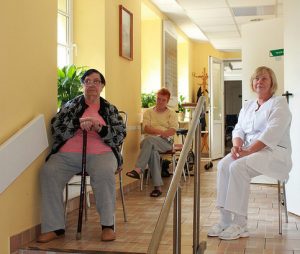
A new medical specialty may be forming to meet a rising demand for care in nursing homes. A recent study found that physicians and advanced practitioners (nurse practitioners and physician assistants) who focus on nursing home-only care increased by a third between 2012 and 2015.
This apparent trend may be significantly affecting outcomes and continuity of care, concluded researchers at the University of Pennsylvania Perelman School of Medicine. They are not yet clear just how, or how much. Clinicians who exclusively practice in nursing homes may improve patient health and lower spending by leveraging expertise in nursing home processes. Concentrating care, however may also mean that nursing home residents less frequently visit their primary care providers, who often follow their patients across care settings.
Of all physicians and advanced practitioners who do any work in nursing homes, only 21 percent specialized in that type of care in 2015, according to the study. Clinicians who specialized in post-acute care and advanced practitioners were the most prevalent types of nursing home specialists. Their effect on patient care may be considerable because they provide a disproportionate share of the visits, the study found.
Pressure to reduce costs, as well as greater government scrutiny, also may be driving this shift, said study lead author Kira Ryskina, M.D., an assistant professor at the Perelman School of Medicine. “Twenty years ago, the hospitalist movement started in the same way, wherein hospitals were under pressure to reduce costs and readmissions. We might be seeing the beginnings of a similar trend in nursing home care.”
There were 15,600 nursing homes in the United States with 1.7 million licensed beds in 2014, according to the CDC. More than two-thirds were for-profit facilities. Moreover, the quality of health care in these facilities varies considerably.
Not surprisingly, the analysis found that the rate for the worst-performing nursing homes was associated with more hospital readmissions within 30 days than those for the best-performing nursing homes. Another effort to minimize readmissions, a CMS initiative is known as OPTIMISTIC (Optimizing Patient Transfers, Impacting Medical Quality and Improving Symptoms: Transforming Institutional Care) is considered to have helped reduce the number of avoidable hospitalizations by a third since 2013.
For this study, Ryskina and colleagues used Medicare’s Long-Term Care Focus database to analyze all Part B Medicare fee-for-service billings by generalist physicians, nurse practitioners, and physician assistants who provided nursing home-based care during 2012-2015. Nursing-home specialists were defined as those clinicians billing at least 90 percent of episodes from a nursing home.
Questions to ask
Journalists: how do hospital readmission rates from skilled nursing facilities in your community compare? You can parse the data for key metrics in your city or state at this Medicare’s Nursing Home Compare website. Then ask: Are local nursing homes seeing an uptick in physician or advanced practice specialists? Has it impacted readmission rates or quality of care?
Resources
- This Commonwealth Fund report looks at costs and potential cost-savings of avoidable nursing home-related hospitalizations
- This presentation from Duke examines trends and challenges in the health care workforce in the Carolinas and across the U.S.








